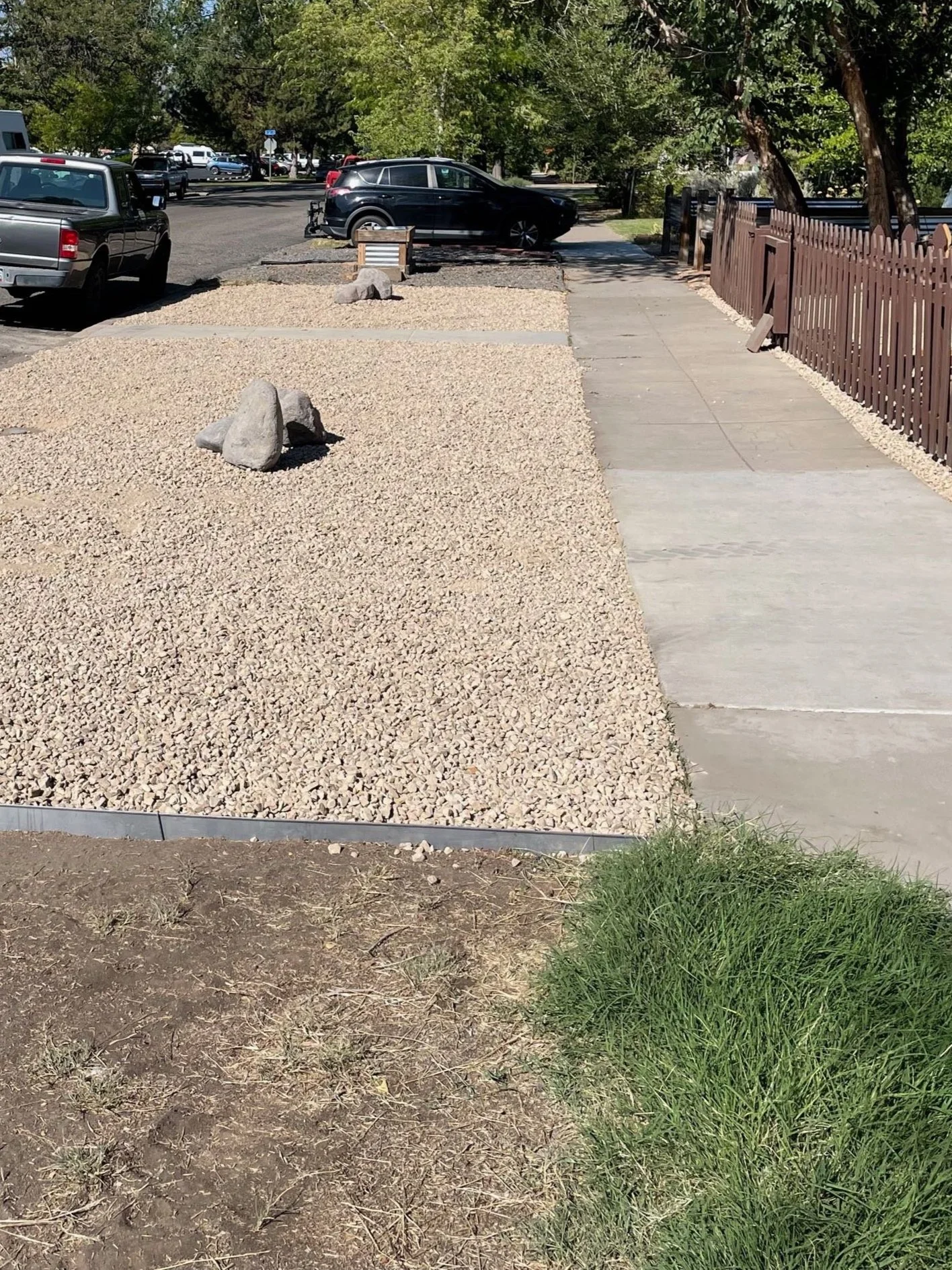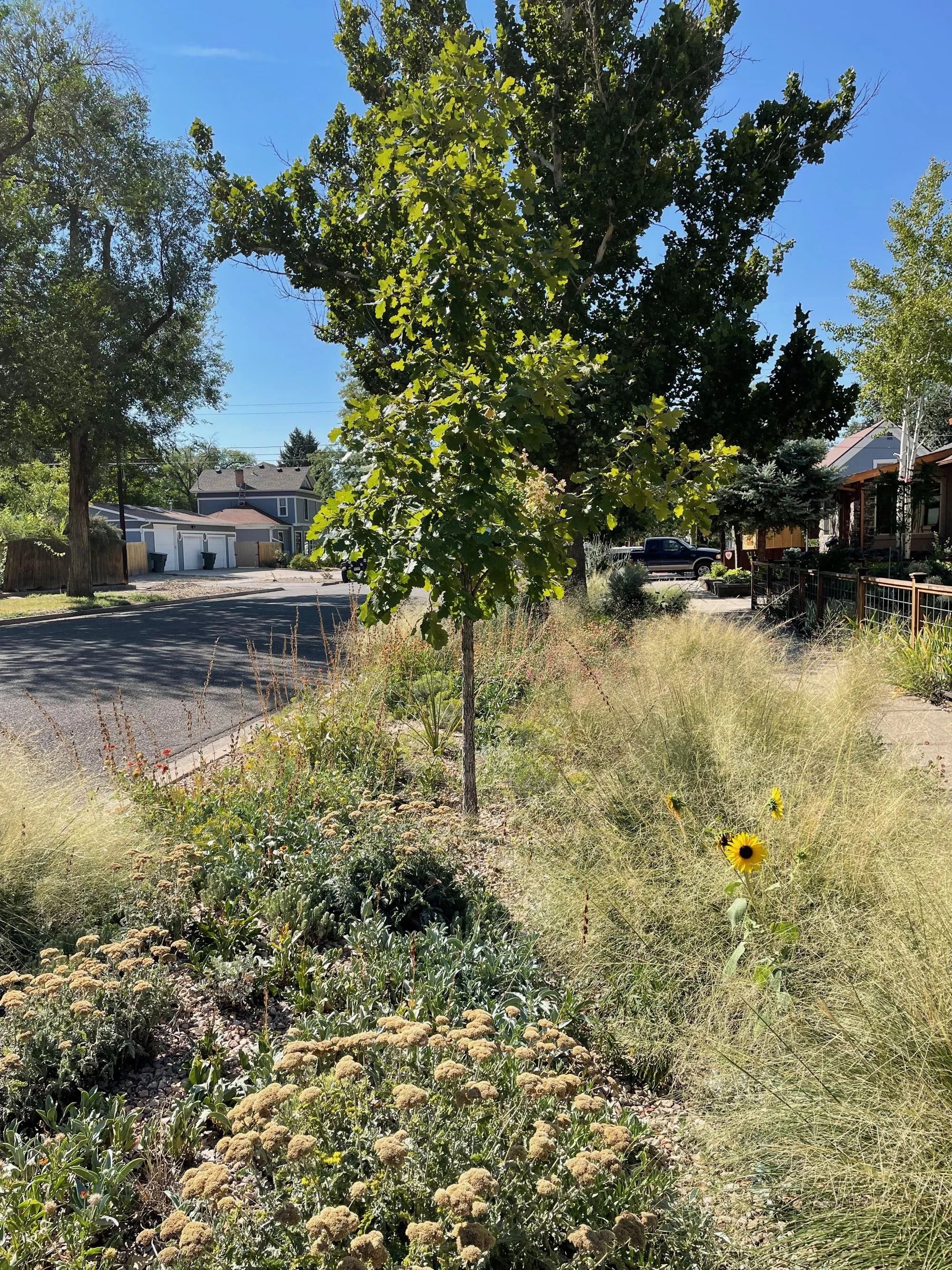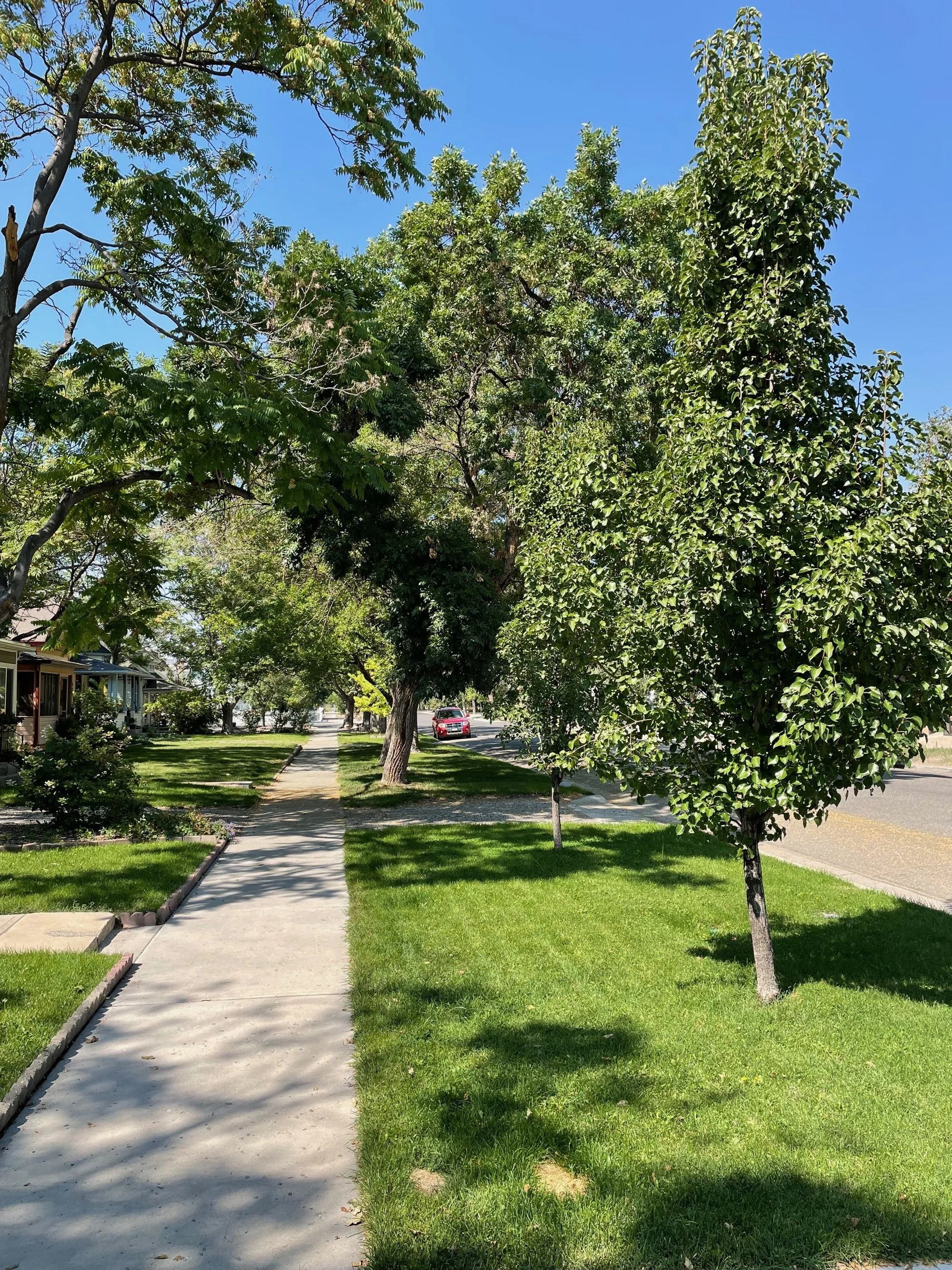Information.
We have identified four main categories of landscaping that have been applied to our downtown planting strips, or Rights-of-Way, although some could be considered a blend:
No Landscape or an Abandoned Landscape (Abandonscape)
Rockscape ( we call this a Deadscape, others say Zeroscape)
Water-Wise Landscape (Xeriscape)
Traditional Landscape
No Landscape or Abandonscape
Some people don’t have much interest in what is on the outside of their home. Others have financial or physical constraints that prevent them from buying and installing plants and providing the water and other care. The Grand Junction Forestry Department would plant trees on this Right-of-Way if the property owner would install the means to water them. The community as a whole would benefit from more shady streets, cleaner air, and a cooler environment. Read on for information on low-cost low-volume drip irrigation.
Rockscape (Deadscape or Zeroscape)
We are under a lot of pressure to reduce water use in the landscape. It might seem like installing a weed barrier fabric and rock like this is the environmentally right thing to do, but is it?
The weed barrier is a petroleum based product. The rock was quarried, crushed and delivered by heavy equipment. This gravel will increase temperatures substantially, perhaps twenty degrees or more higher than in the shade of a tree, leading to increased energy demand for home cooling.
Water-Wise Landscape (Xeriscape)
Xeriscape combines the principles of efficient drip irrigation with a palette of attractive trees, shrubs, and perennials that are adapted to our environment. Grassy areas may also be established using Blue Grama, Buffalograss, or other warm season grasses. Do not expect these to look like a bluegrass lawn, but they can be low maintenance and attractive. Xeriscape is likely our best option going into the future to keep living plants, including shade trees, on our Rights of Way and also our yards as a whole. Check out the Seven Principles of Xeriscape
Traditional Landscape
The traditional landscape for a planting strip needs little introduction - a bluegrass lawn with shade or ornamental trees at appropriate intervals. Looks good and it’s what we expect. BUT. Is it as thing of the past with ever increasing summer temperatures and a shrinking supply of water? The trees will do well with a deep watering every two weeks or so, but the cool-season turf will go brown and dormant without more frequent watering.
Questions and Answers
Right of Way trees aren’t on my property, they belong to the city, why should I care?
Many people are surprised to hear that city codes state that it is the property owners responsibility to water and care for street trees adjacent to their property. Also, keep in mind that with happy, healthy street trees your property has far greater curb appeal, and therefore higher resale value. Your neighbors will appreciate your sense of community too.
My neighbors have put in a rock-scape and they say it’s a more ecological way to go!
They are wrong! Gravel is not the answer. It will add to the ever-intensifying heat in the grand valley and adds to our carbon footprint rather than reducing it.
Read on for some tips on how to take the hell out of your hell-strip and turn it into an environmental success story!I’m sick of mowing grass and fixing sprinklers, so what’s the alternative?
You can have an attractive low-maintenance landscape that greatly reduces water use and doesn’t need mowing, and shade trees will thrive. Don’t give up on it….it’s a false choice to suggest that the only alternative to a bluegrass lawn is a pile of gravel. We can help with ideas!
We have a serious drought problem, it’s nonsensical to water grass and trees!
You’re right that it’s nonsensical to waste water. Probably 50% of the water that’s used for landscaping winds up in the street. We have to be smarter about how we do things. Water needs to be applied where it’s needed and when it’s needed. We can keep our trees healthy while saving water, and that makes the most environmental sense.. Please read on, we’d love the opportunity to convince you we can have our shade and save water too!
My water bill is just too damned high and it’s only going to get higher!
Yes, water will only get more expensive. Most sprinkler systems are very wasteful and inefficient. Older types of spray-heads waste a ton of water. Newer controllers can monitor the weather and shut off when appropriate. Some tweaks to a watering system and controller program can save a lot of water. We can help you with this! In the near future, the use of gray water for landscaping will almost certainly become the norm in our area.
Trees have deep roots, they’ll be just fine, won’t they?
No, they won’t. Tree roots are mainly in the top 18” of the soil profile, and extend out far further than most people expect. For a mature tree, the radius of the root system could be equal to the height, or more. Ideally, trees like a thorough soaking every few weeks, so that moisture extends down to that two foot depth. Your tree likely draws water from your neighbors yard, and vice versa. There are very few places in our street-scapes where ground-water suffices.
I own rental properties, the grass and trees died years ago, why create more work and expense for myself?
Well, with an investment in your street easement, your property values would improve. Keep in mind that the city will provide new trees provided that there is a commitment to water and care for them. Your tenants would be happier and less likely to bother you about needing air-conditioning put in. Also, you’d be a stand-up member of your community!



